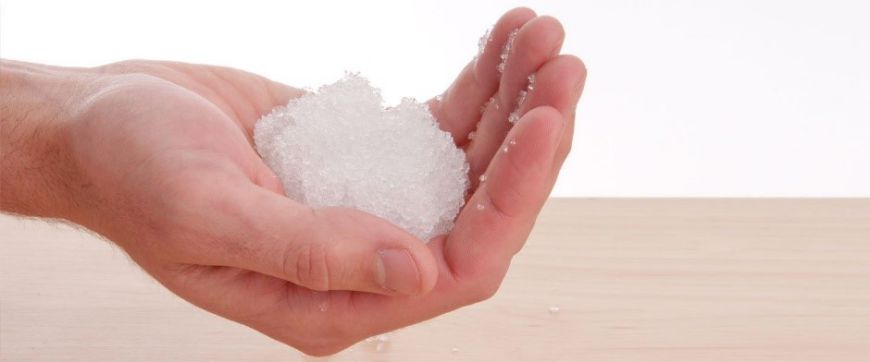ACRYLIC ACID & ACRYLATES
Acrylic acid is a contaminant, when reacted with an alcohol, forms esters, known as Acrylates.
 Acrylates play an important role in the manufacturing of plastics, adhesives, floor polishes, paints, and coatings and adhesives of various types.
Acrylates play an important role in the manufacturing of plastics, adhesives, floor polishes, paints, and coatings and adhesives of various types.
In their monomer states are very strong irritants, which can cause contact dermatitis, especially in the cosmetic industry.
The monomers usually come in the form of powders and liquids and when combined in the process of polymerization make a pliable mixture that can be formed into any shape and then hardened.
Where is acrylate found?
- Acrylic nails and glue for nails, eyelashes and eyebrows
- Mascara, nail polish, lipstick, hairspray, body wash, shampoo, sunscreen and hair dye
- Acrylic resin, glues and sealants
- Dental materials (prostheses and composites)
- Acrylic fibres and material
- Disposable nappies and Sanitary pads
- Plastics & rubber
- Synthetic Latex
- Vinyl & PVC (polyvinyl chloride)
- Acrylic paints
- Paper finishes
- Pesticides
Just a few of the acrylates and their wide range of applications:
Polyacrylate
Sodium polyacrylate is an absorbent polymer that is used as an emulsion stabilizer, a hair fixative, a film former, skin conditioner, and a viscosity agent. It's the gel-like crystals in baby diapers and the polyacrylate polymer foam core in sanitary pads, which makes them absorbent. It may cause redness, itching, and pain on the skin or in the eyes; and coughing, shortness of breath, and inflammation of the respiratory tract. Questions have been raised about possible health effects on babies who wear disposable diapers containing sodium polyacrylate. Some people suggest that a baby's tender skin may be more sensitive to the irritation caused by sodium polyacrylate than the skin of an adult. The compound was removed from tampons in 1985 because some women who left their tampons in place too long experienced unacceptable levels of irritation caused by sodium polyacrylate in the product.(1)
In detergents it works as a chelating agent, which neutralizes the heavy metals in water & dirt so that the detergent can be more effective at cleaning. It is also used as a thickening agent because it can absorb and hold onto water molecules.
 The Environment Canada Domestic Substance List classifies sodium polyacrylate as “expected to be toxic or harmful” (2). Small particles of sodium polyacrylate, if inhaled may irritate the airways, cause lung irritation with prolonged exposure (3). The manufacturing process can create contaminants like acrylic acid, which is associated with skin burns, eye damage & skin corrosion (4).
The Environment Canada Domestic Substance List classifies sodium polyacrylate as “expected to be toxic or harmful” (2). Small particles of sodium polyacrylate, if inhaled may irritate the airways, cause lung irritation with prolonged exposure (3). The manufacturing process can create contaminants like acrylic acid, which is associated with skin burns, eye damage & skin corrosion (4).
Sodium polyacrylate may be listed on ingredients labels under the following synonyms:[1]
sodium salt polyacrylic acid; 2-propenoic acid, homopolymer, sodium salt; 2propenoic acis, homopolymer, sodium salt; rhotex gs; acrylic acid homopolymer sodium salt; polyco; homopolymer sodium salt 2-propenoic acid; polyacrylic acid, sodium salt; propenoic acid, sodium carbonate polymer; sodium polyacrylate; sodium salt 2-propenoic acid, homopolymer
Methyl methacrylate Acrylic bone cements are used in orthopaedic surgery, acrylic fibres, films, and inks, solvent-based adhesives and binder, medical spray adhesives, UV inks, adhesives, lacquers, dental materials, artificial nails, adhesive for false eyelashes and eyebrows, coating for scratch-resistant glass, paint resins, and binders for textiles and paper.
(Acrylates Copolymer: acrylic acid and methacrylic acid)
- A stabilizer mostly used in hair styling products to set, add body and protect it from humidity and static, as well as an adhesive for nail binding products
- It’s also adds water-resistance in cosmetic products; creams, sunscreen and mascara, hair dye, nail polish, lipstick, hairspray, body wash and anti-aging treatments.
Ethyl acrylate
Acrylic resin is used in paint formulations, industrial coatings and latexes, acrylic rubber and plastics, denture materials, floor polishes, sealants, shoe polishes, adhesives and in textiles and paper coatings.
Ethyleneglycol dimethacrylate
Used to make plastic bottles for soft drinks, dental materials, artificial nails, printing inks, automobile antifreeze and engine-cooling liquids.
Other names for acrylates:
|
2-hydroxyethylmethacrylate (HEMA) Triethyleneglycol dimethacrylate Ethyleneglycol dimethacrylate |
Bisphenol A glycerolate dimethacrylate (BIS-GMA) Triethylene glycol diacrylate Ethyl cyanoacrylate |
References:
(1) https://www.encyclopedia.com/science/academic-and-educational-journals/sodium-polyacrylate
(2) EWG’s Skin Deep Cosmetics Database https://www.ewg.org/skindeep/ingredient/706159/SODIUM_POLYACRYLATE/
(3) NIOSH (2015). Polyacrylic Acid, Sodium Salt. https://www.cdc.gov/niosh/ipcsneng/neng1429.html
(4) EWG Guide to Healthier Cleaning: Sodium Polyacrylic. http://www.ewg.org/guides/substances/5654
Read more:
www.forceofnatureclean.com/chemical free living sodium polycrylate/
www.ehn.org/diapers and menstrual pads chemicals
www.nationalpollutantinventory.gov.au › resource › acrylic-acid